When you want to start a new workout routine, you have more questions than answers. Where Do I start? What do I do? What do I eat? What else do I need to know?
You start checking out information on Pinterest, YouTube, and Google to see if you can piece together enough information to make a go of it.
In the end, you can make a mess of it because nothing really seems to work. You get going for a couple of weeks and then you fall off the wagon. How do you restart? Why can’t you make it work?
It’s easy to think that there’s something wrong with you. Everywhere you turn, you see people who were able to lose weight and keep it off. You see women who are strong and cut and fit. You wonder why you don’t look like that.
It’s a horrible feeling. I know. I’ve been there.
Here’s the truth, and I want you to come closer so you can really hear me.
THERE IS NOTHING WRONG WITH YOU!!!! NOTHING.
You’ve just been told some things that don’t quite work. It’s not your fault. You weren’t given all of the tools to make it work.
That’s what I seek to do in this workout guide for women. Consider it a good starting point to make workouts work for you. Keep reading to find out what you need to know to start your own workout routine.

The Challenges That Women Face
You have to start your workout plan with a few unusual steps. The first is to shine a light on the potential obstacles in your way.
Women have very unique challenges in the fitness industry. It’s hard to be a woman and wade into the fitness industry because there’s a ton of misinformation.
Secondly, you’re being given a set of unrealistic standards. Not many people understand your day-to-day challenges of juggling kids, educating your kids at home, managing schedules, meals, laundry, and finding enough time for yourself.
You may have had the laundry sitting on the bed to be folded for days. You need to have at least one glass of wine to unwind and regain a slight sense of sanity after the kids go to bed.
How can you do all of that and fit self-care into any of that? It just doesn’t happen.
The reason why I bring this up is that these are the things that suck up your day. How do you fit self-care into any of this craziness?
A little bit at a time.
The first step of a successful fitness program is to admit right off the bat that you’re not Superwoman. You’ll feel like it soon, but you’re not there yet.
You are in fact human. You’ll make mistakes. You’ll get back up. You’ll start over. All of that is part of the journey. Once you stop shooting for perfection and start shooting for a little bit of progress at a time, the stress falls away and fitness becomes enjoyable.
The chaos is totally different from what you see from the fitness pros. You see perfect women in their perfect outfits doing the perfect workouts.
They’re usually 20-somethings that don’t have the life experience that you have. They’re also setting unrealistic standards for everyone with their fitness model looks and stylized photos and videos.
Let’s the fitfluencers be fitfluencers. You just need to remain grounded in reality. Look for a community (ahem!) that understands your challenges and keeps it real.
I recently had a client tell me that she saw a youtube video of a fitfluencer selling a new abs program. She said to me “I want to get abs.” Here’s what I told her.
“OK, here’s what it takes. I’ve been there, and it’s not easy. It takes a ton of discipline. I was hungry all of the time. I had to weigh my food. I didn’t eat sugar at all. I was a pain in the ass about it and I obsessed over it.”
That’s the stuff that people don’t tell you about getting 6-pack abs. They also don’t tell you that they’ll train for weeks ahead of a photoshoot so they look perfect.
How do you manage to tune out all of that noise? Focus on you. Set realistic goals and stay focused on them.
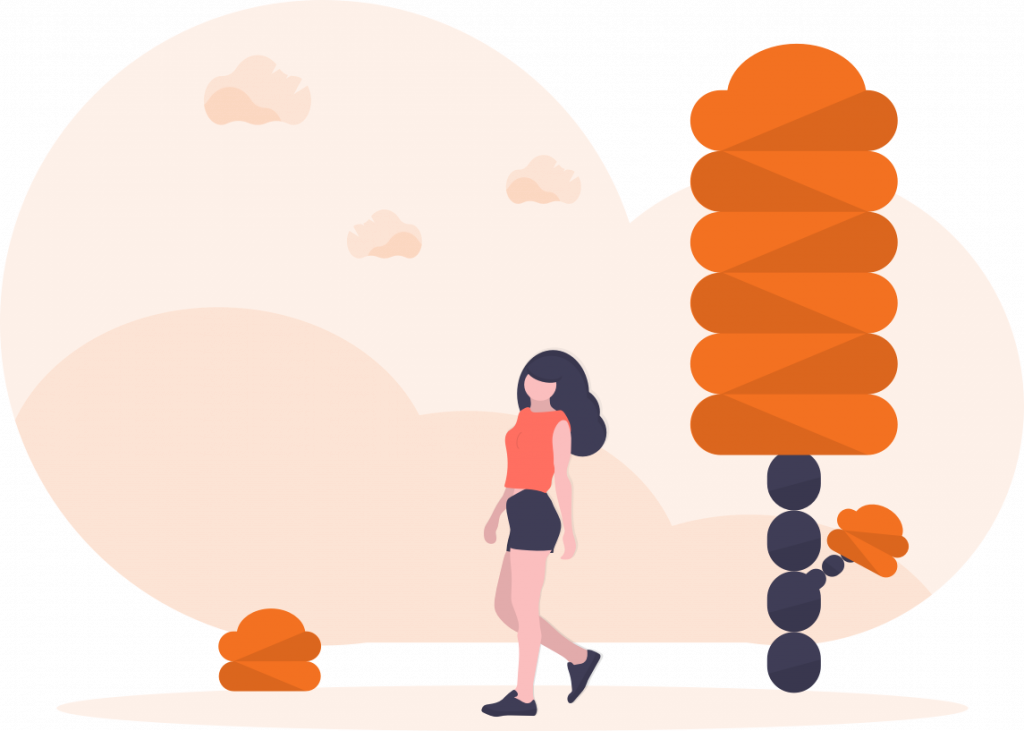
Getting Your Mindset Right Before Getting Started
Over and over again, I see the same patterns emerge with clients. These patterns and behaviors largely determine their failure or success. Here are some of the things that I want to share with you before you get started.
Accept Where You’re At
You’re on this page because you want to lose weight or feel stronger. You need to make a change because what you’ve been doing hasn’t worked for you.
You may be unhappy about it. You may be downright angry about it. That’s OK. I’ve been there.
Back in about 2011, I was about 25 pounds overweight. I remember specifically that I tried on a pair of pants and they no longer fit.
I could barely get them over my legs and I couldn’t button them.
I completely lost it. I was so upset that I let myself get to that point, I had a legit tantrum. I broke stuff. I threw things. I was enraged.
I had a hard time accepting where I was because I always saw myself differently. I was the athlete. I was invincible. I was strong and fit.
Not that day. I had a really hard time reconciling the self-image and reality. I hated myself for it, and trust me when I say that’s no place to be.
I decided that I wanted to change, but I didn’t know how.
It took me about three more long and painful years to accept where I was. That was the first step to making changes that stick.
It’s OK to feel sad or angry about where you are right now. The key is to say, it’s ok. I made choices in the past that got me to this point. It’s now on me to make different choices.
The good news is that you absolutely have all of the power in the world to make different choices and move towards a new beginning.
Once you let go of those negative emotions, you start the process of letting go of the excess weight.
Celebrate Failure
Failure is acceptable (and necessary). Too many fitness pros have the mindset that failure isn’t optional. If you fail, that’s the end of it. You have to start over.
That’s false.
I celebrate failures and mistakes. That’s how you learn, grow, and get better. There’s no need to judge. There’s no need to start over.
It’s kinda like sailing. You’re on course towards your destination. The wind is at your back and you’re well on your way. It’s cool to cruise for a while.
Then the winds change suddenly. You don’t go back to the beginning. You adjust the sails, tack, jibe, and get back on course.
That’s what you need to do when life happens in the middle of your fitness groove. You adjust, but you keep going. With each adjustment, you become more comfortable with change. With each adjustment, you get to the point where nothing can knock you off course.
You learn to adapt and grow. This is what you can apply in every aspect of your life.
That’s what compassionate fitness coaching brings to the table. An understanding that you’ll get knocked around a bit. You’ll vacillate between sticking to your new routine and falling off the wagon once in a while.
That doesn’t give you a reason to think you failed or you should beat yourself up. These are the times where you learn the biggest lessons.
Welcome them with open arms. Celebrate them.
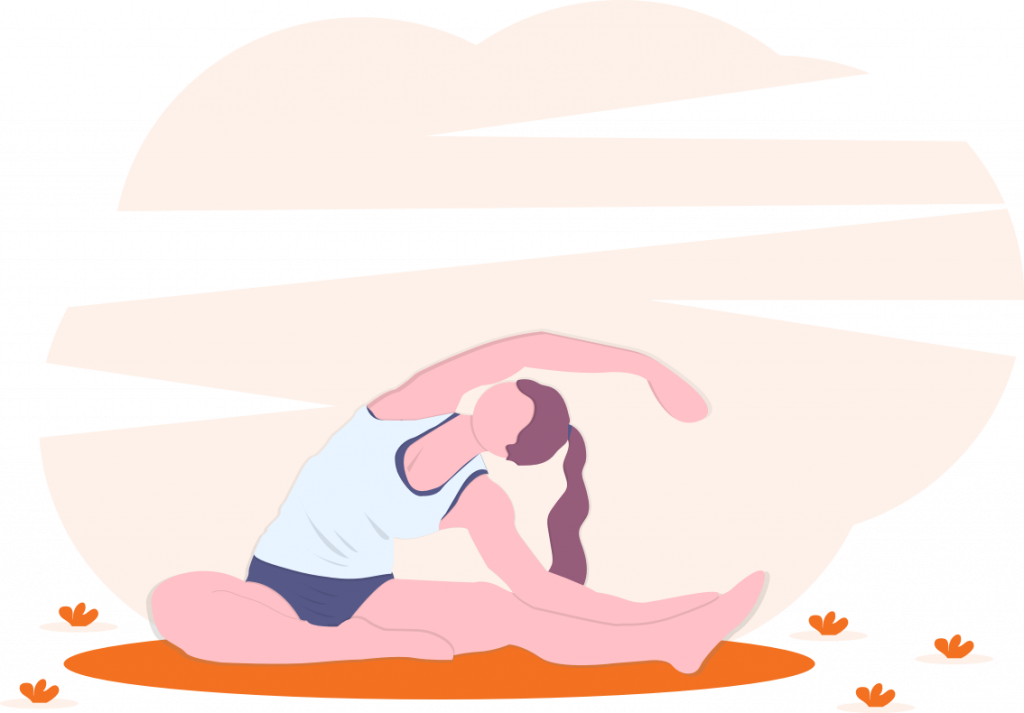
How Does Weight Loss Really Happen?
The traditional approach to weight loss is that you expend more calories than you take in. That’s true to a certain extent. It seems so simple, doesn’t it?
Yet, there are a ton of really smart people that can’t solve a simple math problem.
Weight loss happens when you have the right mindset, exercise regularly, and eat well.
The missing piece is consistency. Every single day, you make thousands of choices. You choose the clothes you wear, what to eat, when to eat, when you need water, when you need to hit the bathroom, shower, exercise, wake up… Well, you get the picture.
All told, you make about 35,000 decisions every single day. Over 200 of those decisions revolve around food.
You need to pay attention to the decisions you make around food and exercise. Without that attention, you can’t change what you’re doing. You inhibit or halt your progress altogether.
When I created my coaching system for clients, my first step was to shine a light on what’s going on for clients. I then worked on one small change at a time that would benefit the client the most.
This one small step at a time approach is what would get the best approach over the long-term. It did enough to empower clients to make their own choices. When they did that consistently, we’d move on to the next change.
Instead of a short 30-day challenge or 28-day sprint to lose weight, you play the long game. That’s the way to get compounding results.
You then have the tools at your disposal to maintain your weight for the rest of your life.
How Do I Lose Belly Fat (or From My Butt?)?
There are about 135,000 searches for this question every month. There are thousands of other variations of this search, too. How do I lose belly fat in 3 days? How do I lose belly fat in a week?
There are countless searches that ask Google how to lose fat in other areas, like the arms, butt, and thighs.
Here’s what Google isn’t likely to tell you.
There’s isn’t one exercise that’s going to help you lose fat in your chosen area. Yes, sit-ups will give you a stronger core, but you won’t get a six-pack. Squats will help you develop strength in your butt and quads. You won’t get a smaller butt.
That’s where nutrition comes into play. If you want to lose belly fat, you need to work out consistently and make smarter nutrition choices.
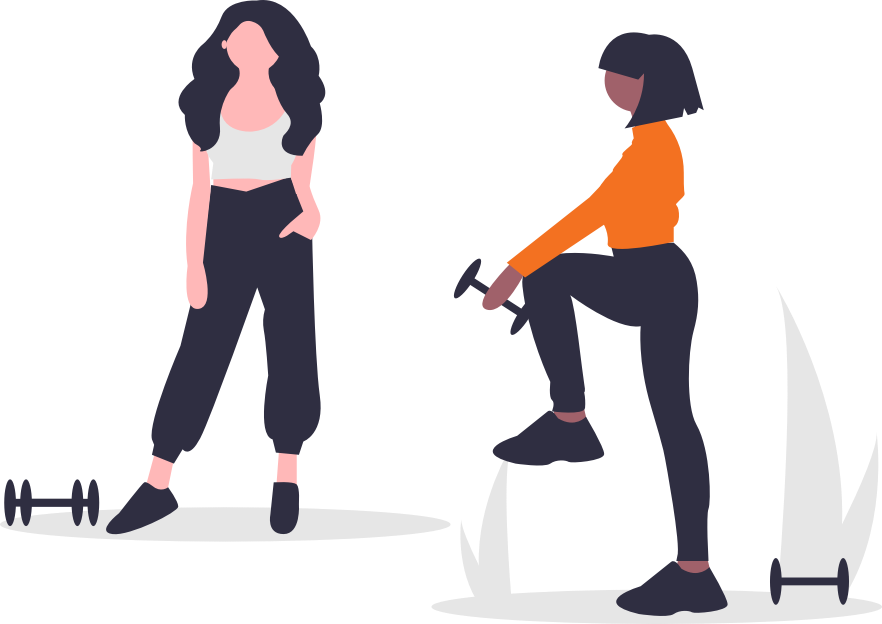
I Don’t Want to Get Bulky, Just Toned
If I had a nickel for every time that I heard a woman say “I just want to get toned,” I’d be a very, very rich woman.
There’s nothing wrong with getting stronger. You may want to firm up certain areas like your triceps. It sucks when you’re clapping and you feel your triceps flapping about.
There is a bit of a problem with being toned. It’s a marketing ploy, plain and simple. The fitness industry marketing heads saw that there was an opportunity.
In the early days of the fitness industry, it was all dudes hanging out at the gym. Industry executives found an opportunity to get women involved (women = $), but they also knew that getting muscular at the gym wasn’t a selling point.
Enter the word “toned.”
This was the word that was used to sell to you and millions of other women. For men, words like “ripped,” “jacked,” are used to sell to you.
It’s all bullshit. Plain and simple.
F(&(7 that. I want you to be strong. It’s in strength where you find your true power. It’s in strength when you discover who you really are and live authentically.
A strong woman scares the shit out of people. It’s much easier to deal with a woman that’s “toned” than it is to deal with a woman that’s strong.
That’s what these selling words all mean. Strong, powerful, and muscular. It’s empowering as all get out when you get to that point.
So, what about getting bulky. Here’s the good news. It’s pretty much impossible to get bulky. You gain muscle, but it’s impossible to bulk up. Your muscles grow in a different way than a man.
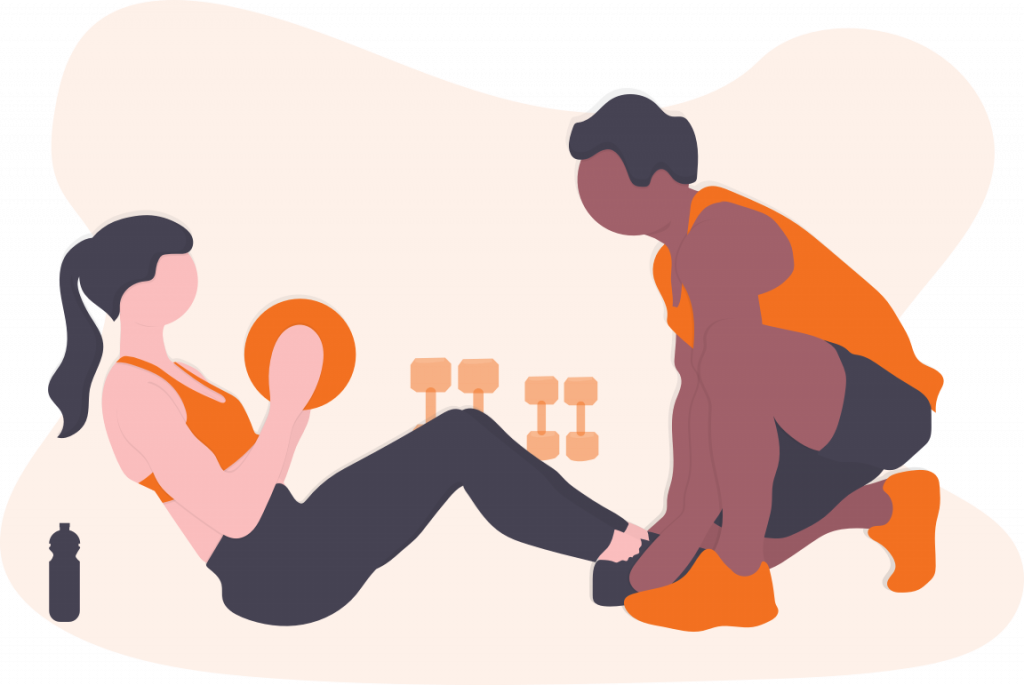
How to Structure Your Workouts
When you’re working out on your own, you may look at people in your gym or on videos and figure they know what they’re doing, so you replicate that.
You might follow along with the videos, but there’s no rhyme or reason to them. They’re put together as sample workouts. That’s fine, but a program that’s designed specifically to accomplish your goals is much more effective.
There are few main movements that you want to focus on as you put your workouts together. I mention this in the TRX Workout for Beginners article I wrote a while back.
Here are the main functional movements you want to improve:
• Push
• Pull
• Squat (knee dominant)
• Hip Hinge
• Core
Pushing and Pulling movements can be broken down into vertical and lateral (horizontal). For example, a vertical pushing movement would be a push press or an overhead press. A lateral movement would be a dumbbell lateral raise.
Generally speaking, you want to have each type of movement in your workouts. These movements are what you use the most, and they ensure that you work the major muscle groups. You want to work on these muscle groups 2-3 times a week.
There are other variables at play. The weight used, amount of rest, the number of reps, and the tempo are largely determined by your goals and your ability.
Beginners should shoot for 3 times a week, with a day of rest in between. Your workouts should be about 45 minutes, where you do between 6-8 exercises. Make sure you give your muscles time in between sets to recover. You might start off with 60 seconds of rest, and gradually lower the amount of rest to 30 seconds.
Again, this is very generalized. Your goals and abilities all come into play when designing programs. The protocols for building strength are different from training for a 5K and weight loss.
What’s That Weird Feeling?
Did you do a workout and experience a little bit of discomfort or soreness a couple of days later? That’s pretty normal.
If you’re not used to working out, you’ll experience many fun sensations. Most of them are normal. However, there are some sensations that can lead to injury.
Here’s a good guideline that goes over the different muscular sensations you might experience when working out.
When you are in the middle of an exercise, you’ll feel your muscles burn. This is a natural reaction when you work your muscles. As you expend energy in your muscles, lactate is created when you expend the oxygen in your muscles.
Lactate then becomes lactic acid, which is supposed to help your body heal.
Many professionals think of this as good pain. That’s not quite true. It’s a sign that you’re pushing your body beyond its endurance capabilities.
After a day or two, you’ll experience DOMS, which stands for Delayed Onset Muscle Soreness.
Are these components necessary to have a good workout? Not at all.
There’s a myth that you need to work hard and sweat in order to have a good workout. That you need to feel sore.
Rubbish.
Ideally, you want to start your program slowly so you don’t feel sore. You also want to warm-up and cool-down before and after each workout.
You want to prepare your body to perform each workout.
Now, there are pains that are signs that you should stop what you’re doing immediately. You shouldn’t experience sharp pains, strange sounds, swelling, or anything else that feels like it hurts, especially in the ligaments, tendons, and joints.
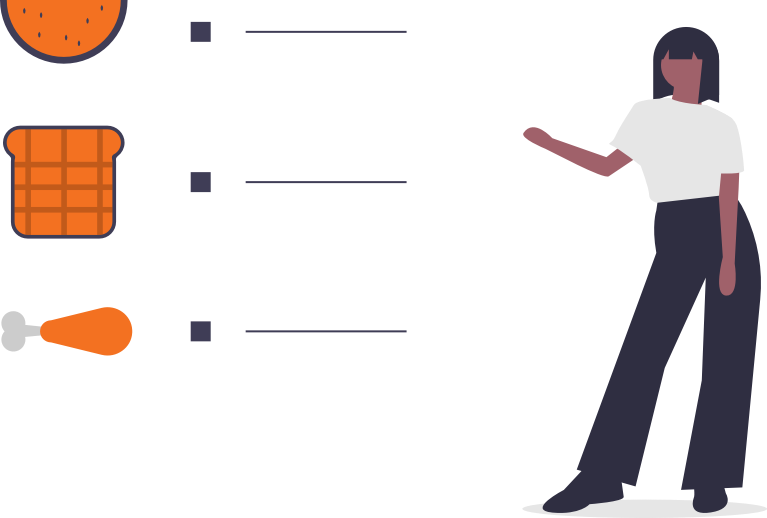
Getting Workout Nutrition Right
Nutrition does go hand in hand with exercise if you want to lose weight and get stronger. Nutrition can be as complicated or simple as you want. In this context, I’m going to make it simple by looking at how you eat and what you eat.
The most important thing is that you’re getting enough calories to support your body. Too little calories, you can lose muscle mass and not have enough energy to get through the way.
Here are the top things you can do to best support your workouts and your health.
1. Cut down on processed foods. Processed foods, dressings, etc. often have lots of added sugars and ingredients that add up to a lot of extra calories. You want to gravitate towards nutrient-dense foods. A lot of processed foods have little to no nutritional value.
Foods that are rich in colors are great for you (peppers, dark, leafy greens) and they’re rich in flavor.
2. Hydrate, hydrate, hydrate. You want to make sure that you consume enough water during the course of the day. How much is enough? It depends on which study you read. The general consensus is that you should consume between ½ to ¾ your weight in ounces of water. Huh?
In a real-world example, if you weigh 140 pounds, you should consume between 70oz – 105oz of water a day. You could split the difference (70+105=175/2=87) and shoot for 87 ounces a day.
3. Eat at a table without distractions. No phones, TV, or anything else. This forces you to chew your food and eat with more awareness. You actually consume more calories eating with distractions.
4. Chew, don’t shovel. We do everything on the go, but it’s so important to sit at a table and eat. Feel the texture of the food, the taste of it, the love that went into making the food. Eating mindlessly is just another way to eat more. Believe it or not, it takes about 15 minutes for your brain and stomach to realize you’re full.
Do I Need to Buy Supplements?
Do you need to get BCAAs, protein powder, or stuff like collagen? Nope. As long as you eat well, you should get all of the nutrients you need from food.
These things aren’t necessary in order to see weight loss results.
You may want to keep protein bars or shakes nearby on days when you’re super busy and you’re not to be able to grab a meal or a snack during the day. That’s a good reason to get them, otherwise, they’re really not necessary.
You may find that you want to get a multivitamin, Omega-3, and Vitamin D to support your overall health. You’ll want to consult with your doctor before taking any supplements or vitamins.
Recovery Matters (especially if you’re of a certain age)
It sucks when you have a ton of momentum going and you get an injury. Things happen, but you want to do everything you can to avoid them.
When you were younger, you didn’t have to worry about stretching or anything like that. You just played and it wasn’t a problem.
I’ve got some unfortunate news for you. You’re not a teenager anymore. You have to put time into warming up, cooling down, and taking care of your muscles.
I explain the science and importance of warming up in this article. Check it out, because there are a few good warm-up routines that you can use, too.
Cool-downs bring your heart rate and muscles back down to normal. It’s also a perfect time to work on your range of motion.
People have a tendency to work out and hop in the car to go straight to the office. They’ll proceed to sit down the rest of the day
What happens is that the muscular tissue tries to repair itself from the stress you placed on them during the workout. Your muscle fibers repair themselves in a way that causes them to bunch up. Over time, you’ll have a limited range of motion and pain.
It will take a lot of time, patience, and work to undo the tissue damage. Your best bet is to stretch and roll out your muscles before getting on with your day.
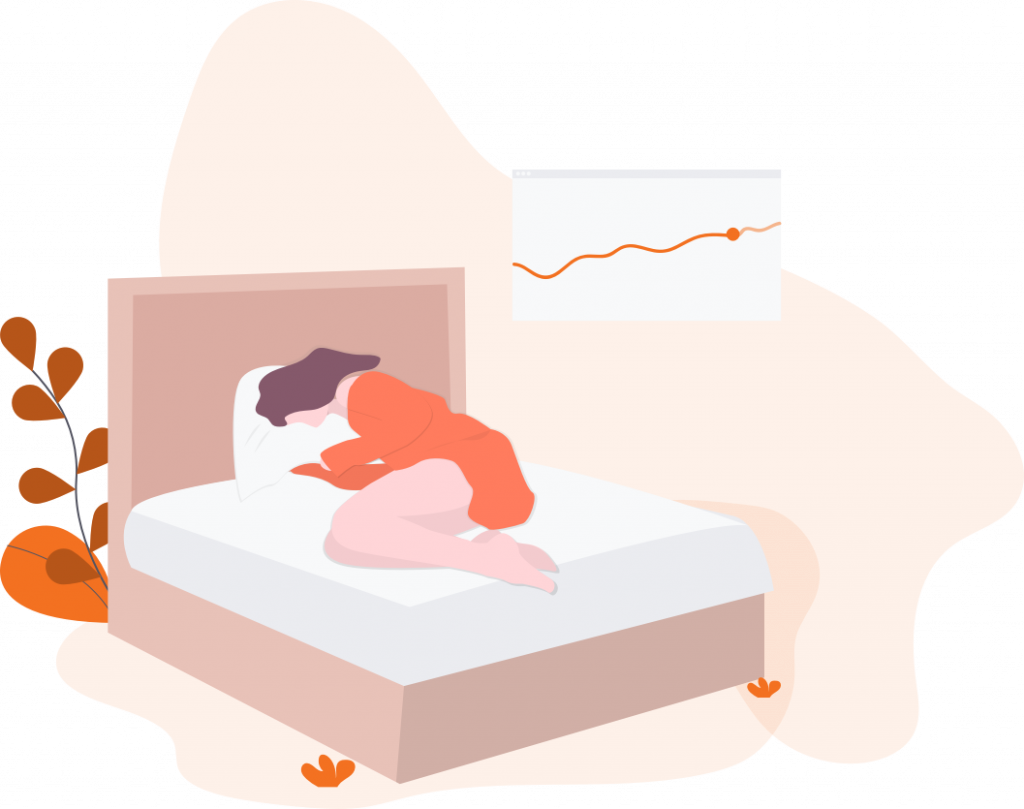
Sleep Is the Secret Sauce
The area of the brain that’s responsible for making decisions takes a vacation when you’re tired. That results in bad choices that add up.
You’re likely to eat comfort (junk) food and eat more of it. You’re probably too tired to go to the gym, especially if you have a long day ahead.
Not only that, but sleep impacts your metabolism. The bottom line is that your diet impacts your sleep, and your sleep impacts your diet.
How can you improve your sleep?
The first thing is to keep a regular schedule. Turn off all electronics or put them away for about an hour before you go to sleep. Get off of Twitter, Facebook, and email.
Start a nighttime ritual that allows you to wind down and get a good night’s sleep. You might use the last hour before sleep to keep a gratitude journal, read, or meditate.
How much sleep do you need? The recommended amount of sleep is between 7-8 hours a night.
Sleep is a very individualized thing, just like nutrition and exercise. You need to find the amount of time that works for you. Your body may only need 6.5 hours, or you need 9.
The important guideline is that you feel refreshed when you wake up. You’re able to think clearly and focus throughout the day.
Why Habit-Based Coaching Works
One of the mistakes that I see people trying to lose weight on their own is that they take on too much at once. They go on a super-restrictive diet, have some success, and then they go back to their old behaviors.
Even the folks from The Biggest Loser gained the weight back.
There are a few reasons why this happens. It doesn’t mean that all reasons apply to your situation. This just spotlights what I’ve seen in my experience.
One possible explanation is that they have a deeply conflicting relationship with food. Food may be used to substitute for security, comfort, or serve some other emotional purpose.
When you go on a drastic diet or make a ton of strict changes at once, you’re not addressing the bad habits that lead to the weight gain to begin with.
Remember at the beginning of this article, I mentioned that you want to make small changes over time? That’s what you want to do. Pick one thing and start to integrate it over time.
Maybe you can start by eating more slowly or eat with relaxing music in the background instead of looking at a screen.
After a couple of weeks, maintain that habit and add more activity to your day. Start a walking routine or a light workout a few days a week.
Then you can add a new habit and continue to progress in a way that’s healthy and sustainable. You’ll notice the difference over time.
Steps to Take After This Workout Guide
Holy crap! I think I just unloaded a ton of information on you in this workout guide. I’m not really sorry about that, because this is what you need to know to get started. It’s just how it is.
Working out isn’t just a matter of doing a few bench presses and calling it good. There is a science, and an art to getting it done. The biggest piece of the puzzle is you. It’s your mindset and your ability to be consistent.
How in the world do you even begin to integrate all of this information? Start with small steps.
Sign up for the 7-day Weight Loss Masterclass. You’ll learn valuable tips to stay consistent and how to eat right as you begin your journey.
